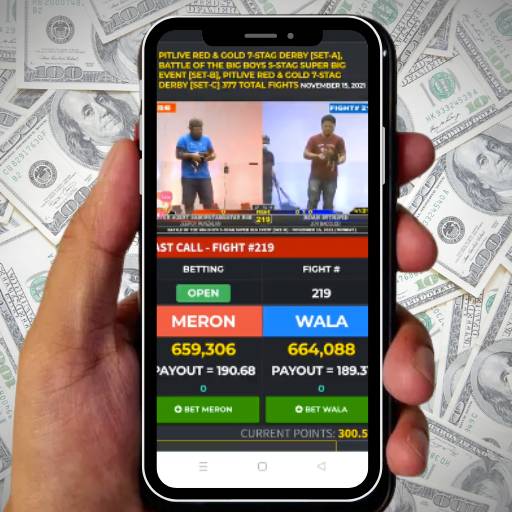Introduction:
People who love Sabong are familiar with these beliefs, rituals, and practices that can affect cockfight results. Some swear by them, attributing their victories to a specific superstition, while others dismiss them as mere folklore. In this blog post, brought to you by Apex Gaming 88, we’ll explore sabong superstitions, separating fact from fiction, and uncovering the stories and science behind these old beliefs.
Section 1: The Superstitions That Abound
Superstitions are as diverse as the breeds of roosters themselves. These beliefs often center around pre-fight rituals and lucky charms. For instance, some bettors insist on feeding their roosters a specific diet or performing certain ceremonies before a match. Lucky amulets, feathers, or even specific colors are also considered essential for success. These practices can vary depending on the region and culture, showcasing the rich tapestry of sabong superstitions.
Superstitions in sabong are not a one-size-fits-all affair. Different regions have their own unique beliefs and practices. In the Philippines, for example, some sabong enthusiasts believe that a crowing rooster is a sign of good luck. In contrast, others believe that a crowing rooster before a fight can bring bad luck. Understanding these regional variations adds depth to the complex world of sabong superstitions.
Section 2: The Stories Behind the Superstitions
Historical Origins
To open up the world of sabong superstitions, it’s crucial to explore their historical roots. Many of these beliefs have deep cultural and historical significance. Some trace back to indigenous traditions, while others have been passed down through generations. For instance, the belief that certain colors bring good luck may have originated from ancient customs, where colors symbolized different attributes or qualities.
The power of superstition often lies in personal experiences. Sabong enthusiasts often have stories about superstitions that helped them win or protect their roosters. These personal stories make sabong superstitions feel real, not ideas.
Section 3: Debunking or Validating Superstitions
Amidst the mystique of sabong superstitions, the scientific community offers a different perspective. From a scientific standpoint, superstitions are often regarded as cognitive biases or illusions. Researchers say there’s no proof that these beliefs affect cockfight outcomes.
To gain further insights, we turn to experts in the field of sabong. Seasoned breeders, bettors, and cockfighting fanatics share their opinions on superstitions. People believe superstitions can boost confidence and decision-making in high-pressure situations, like betting.
Section 4: The Psychology of Superstitions
The psychology behind superstitions is a fascinating subject. Believing in superstitions can make people feel like they have some control and can predict things in a situation where things are usually uncertain. People who follow superstitions might feel less worried and more sure of themselves, which can help them do better.
Placebo Effect
The placebo effect plays a significant role in superstitions. When a bettor believes that a specific ritual or charm brings luck, it can create a self-fulfilling prophecy. The mere act of believing in a superstition can influence their behavior and, in turn, affect the outcome of a cockfight.
The Role of Technology in Modern Superstitions:
In the digital age, the role of technology in shaping and spreading sabong superstitions cannot be understated. Online forums, social media platforms, and cockfighting websites have become virtual hubs where enthusiasts discuss, share, and debate superstitions. Here’s how technology has influenced modern sabong beliefs:
Online Communities:
Cockfighting enthusiasts from around the world now connect in online communities where superstitions are hot topics. These forums serve as digital gathering places where individuals share their experiences, debate the effectiveness of rituals, and even exchange tips on new superstitions.
Live Streaming:
The rise of live streaming platforms has allowed bettors to watch sabong matches in real-time from anywhere. People have developed “live superstitions.” They think their actions during a fight can affect the outcome. This blending of the virtual and real worlds demonstrates how technology has adapted traditional beliefs.
Superstition Tracking:
Some tech-savvy sabong enthusiasts use apps and software to track the performance of roosters and their associated superstitions. They collect data on which rituals teams follow and determine if they align with wins or losses. This data-driven approach has given rise to a new level of superstition analysis.
Social Media Influences:
Social media influencers within the sabong community have become influential in shaping beliefs. They share their own superstitions, and their followers often adopt these practices. The power of social influence through technology has added new layers to the world of sabong superstitions.
Sabong Superstitions in Literature and Folklore:
The world of sabong has a rich history that is often reflected in literature and folklore. These stories provide insights into how superstitions have been woven into the cultural fabric of cockfighting communities.
In some cultures, people consider roosters to be symbols of courage and strength. They often appear in folklore as mythical creatures with magical properties. These tales reinforce the idea that roosters are more than mere animals; they are symbols of hope and valor.
In literature and folklore, there are often stories about legendary cockfights. These fights involve big bets, life-changing wins, and devastating losses. In these stories, superstitions are often heightened, with characters relying on rituals and charms to secure victory.
Moral Lessons:
Folklore sometimes uses cockfights and superstitions as metaphors for larger life lessons. Stories may convey the idea that luck alone is not enough and that one’s actions and strategies matter as much as superstitions.
Historical Accounts:
Historical accounts of cockfighting often detail the superstitions prevalent during specific periods. These documents show how beliefs changed over time and influenced cockfighting culture.
Cockfighting is not unique to a single culture. It has variations around the world, each with its own set of beliefs and superstitions. Here’s a comparative analysis of how beliefs in different cockfighting traditions align and diverge:
Geographical Differences:
Superstitions in cockfighting often vary by region. For example, sabong superstitions in the Philippines may differ from those in Mexico or Thailand. Studying these geographical variations can reveal the diverse ways in which cultures interpret and practice cockfighting.
Common Themes:
Despite regional differences, there are often common themes in cockfighting beliefs. For instance, the belief in roosters as symbols of valor and pride is widespread, transcending cultural boundaries.
Influence of Religion:
In some regions, cockfighting beliefs are intertwined with religious practices. Understanding how different religions have shaped these beliefs adds depth to the comparative analysis.
Historical Context:
Historical events, such as colonization or migration, have influenced cockfighting practices and superstitions in different parts of the world. Analyzing these historical contexts provides valuable insights into the evolution of beliefs.
Studying how different cultures view cockfighting helps us see what’s common in the sport across the world and how each culture has its own unique ideas about it. Beliefs about cockfighting, like cultural labels, shape themselves through history, location, and tradition.
Section 6: The Verdict: Fact or Fiction?
Expert Consensus
After looking at the stories, science, and psychology of sabong superstitions, we still don’t know the answer. Experts generally agree that there’s no concrete evidence to prove their efficacy. Yet, they also emphasize that superstitions can serve as powerful psychological tools that influence a person’s mindset and behavior.
Balancing Belief
In the world of sabong, superstitions walk a fine line between fact and fiction. Regardless of their validity, they add an extra layer of excitement and engagement to the sport. For some, superstitions are an integral part of their sabong journey, offering a unique and personal connection to the world of cockfighting.
Conclusion:
As we conclude our exploration of sabong superstitions, we find ourselves standing at the crossroads of belief and skepticism. Are these rituals and beliefs rooted in concrete facts, or are they woven into the fabric of sabong’s cultural tapestry? The answer, it seems, lies within the hearts and minds of those who embrace these superstitions. Where adrenaline flows as freely as feathers fly, belief is often the strongest talisman of all.
FAQ Section:
Q1: Can superstitions in sabong guarantee victory?
- A: Superstitions do not guarantee victory, but they can influence a bettor’s mindset and behavior, affecting their performance.
Q2: Are sabong superstitions the same worldwide?
- A: No, sabong superstitions vary by region and culture, leading to a rich tapestry of beliefs and practices.
Q3: Do scientific studies support the effectiveness of sabong superstitions?
- A: Scientifically, there’s no concrete evidence to support the effectiveness of sabong superstitions in influencing the outcome of cockfights.
Q4: How do superstitions impact a bettor’s psychology?
- A: Superstitions can boost a bettor’s confidence, reduce anxiety, and create a self-fulfilling prophecy, potentially influencing their decision-making.
Q5: Are there any unusual or eccentric sabong superstitions?
- A: Yes, sabong enthusiasts have embraced a wide range of unusual superstitions, from dressing roosters in costumes to elaborate pre-fight ceremonies.


